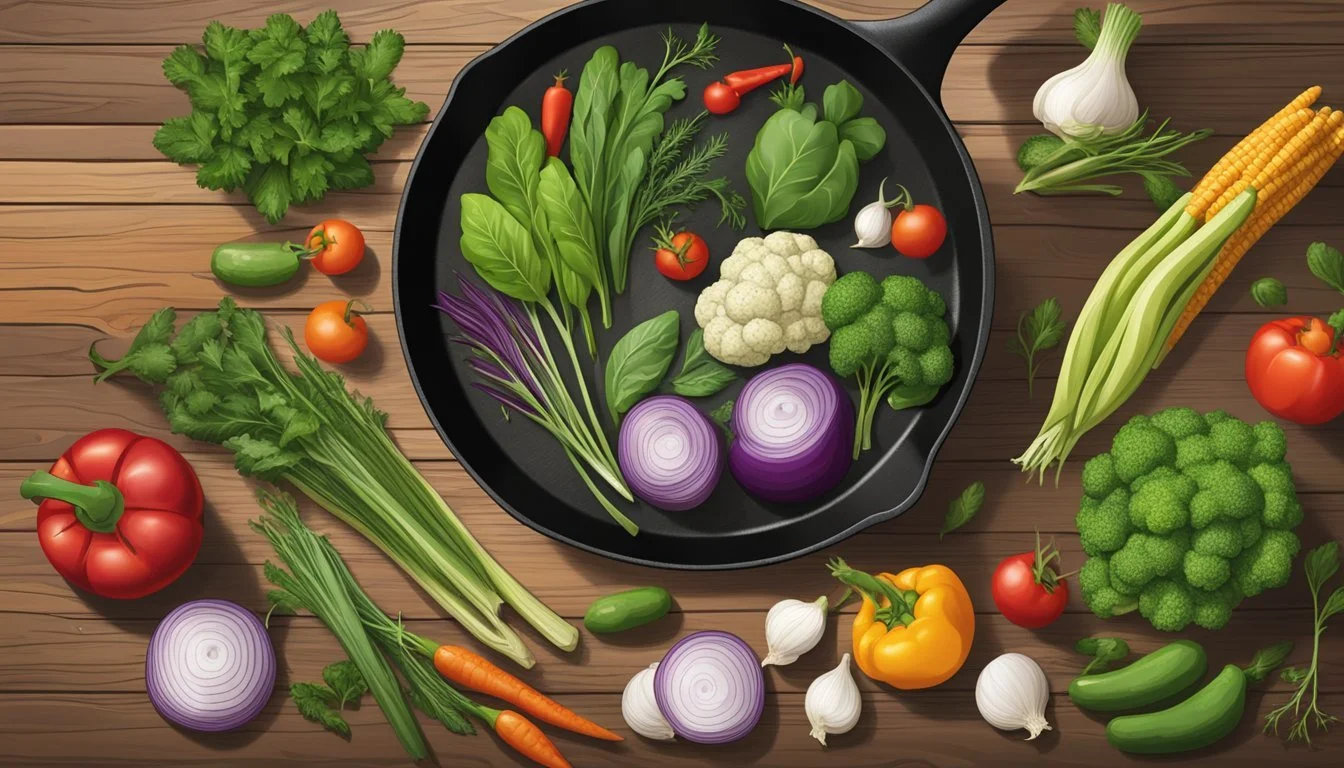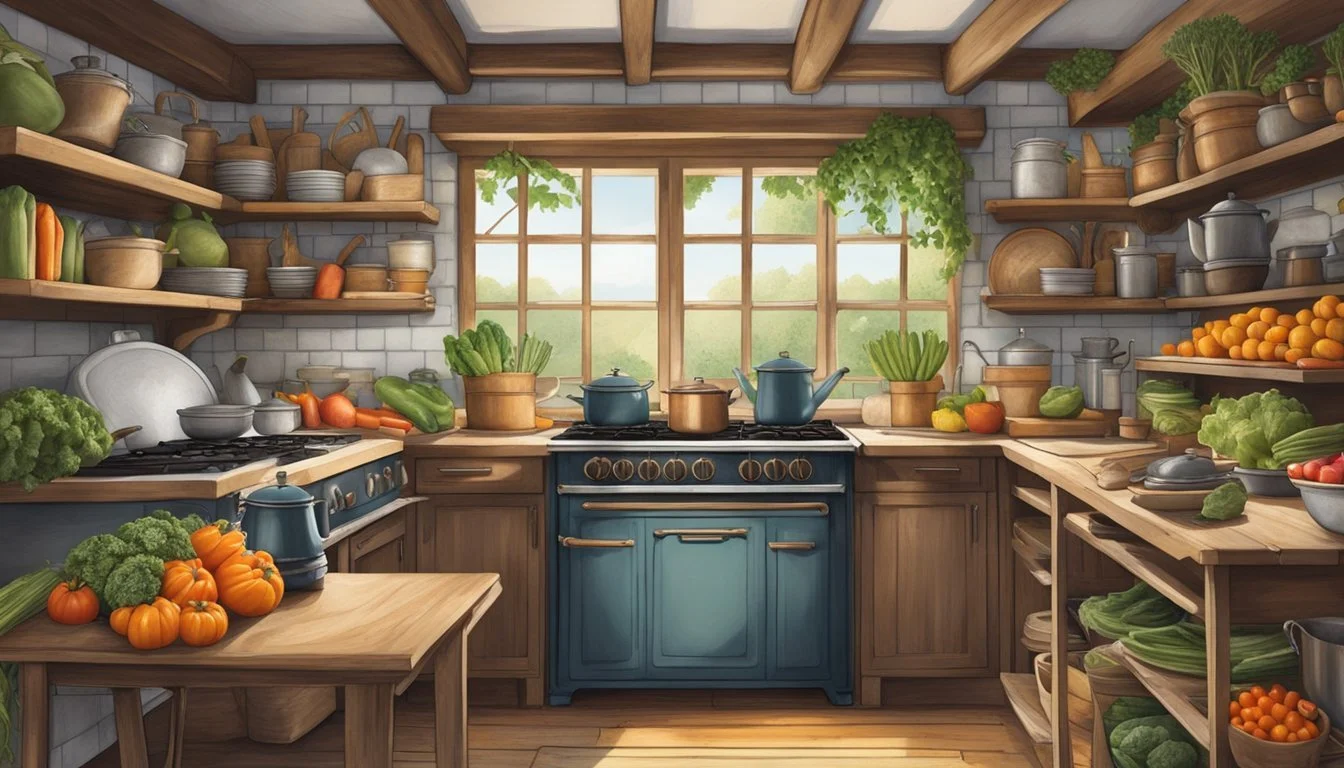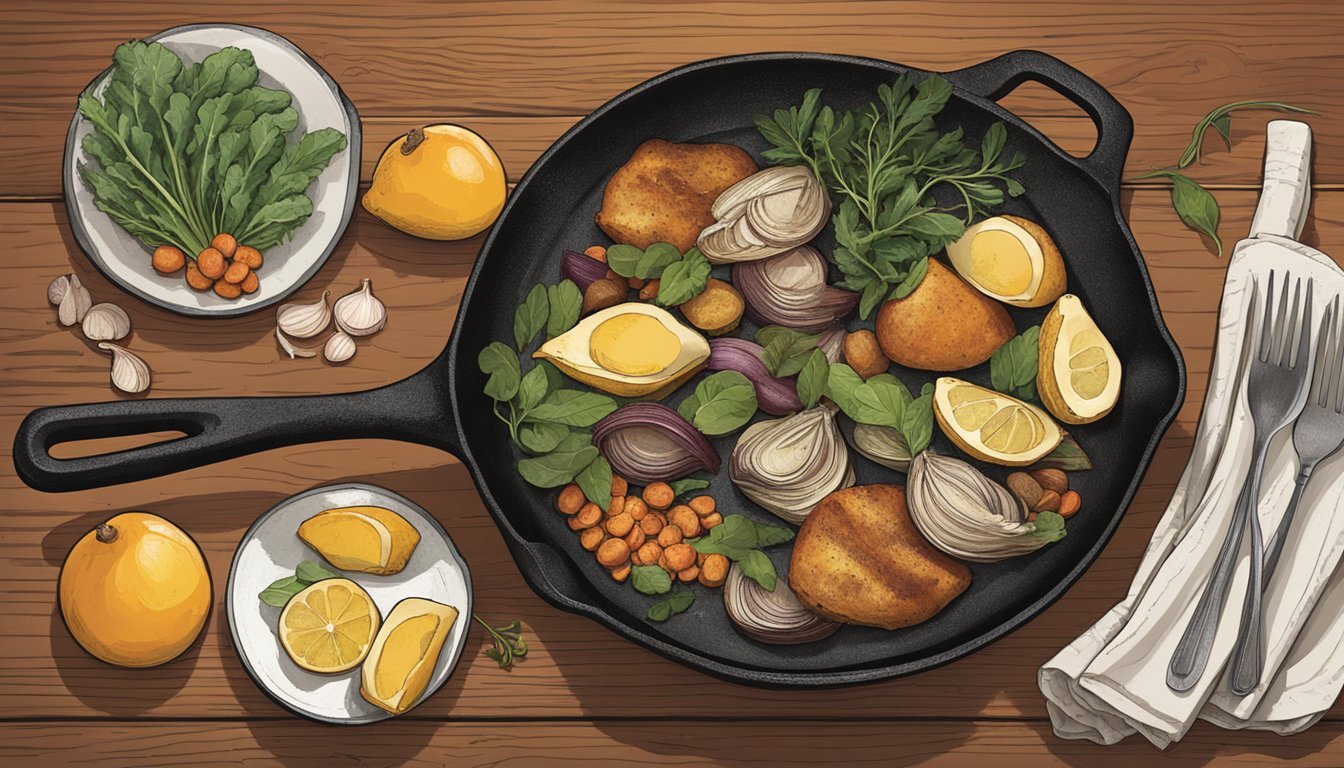Cast Iron and the Slow Food Movement
Uniting Tradition and Taste
The Slow Food movement, founded by Carlo Petrini in 1986, aims to counteract fast food and fast life, reconnecting people with the traditional and regional cuisine, and the process of food preparation. At its core, the movement encourages taking time to savor meals and appreciate the efforts that go into growing, harvesting, and preparing food. This philosophy naturally aligns with the use of cast iron cookware, which has been a trusted companion in kitchens for centuries. Cast iron is praised for its durability, heat retention, and ability to enhance the flavor profile of dishes prepared within its weighty bounds.
As a vessel that requires patience and skill to utilize effectively, cast iron skillets amplify the ideals of the Slow Food movement. They are not tools for hurried cooking; rather, they excel during slow roasting, simmering, and baking. The act of cooking with cast iron stands as a testament to the movement’s principles—it demands attention to detail, knowledge of temperature control, and a willingness to invest time for a superior culinary experience.
Linking cast iron's robust presence in the kitchen with the Slow Food ethos presents an opportunity to explore a partnership that transcends modern culinary trends. Both cast iron cookware and the Slow Food movement serve as reminders that quality, sustainability, and tradition hold significant value in a world often dominated by the pursuit of speed and convenience. They represent a collective effort to preserve a heritage of cooking that not only feeds the body but also nourishes the soul.
The timeless allure of cast iron kitchen tools aligns seamlessly with the principles of the Slow Food Movement, offering a perfect match for savoring the art of cooking and dining. With its versatility and durability, cast iron provides the ideal surfaces for cast iron cooking, allowing for the creation of hearty and comforting cast iron winter recipes that are synonymous with the Slow Food ethos.
Embracing cast iron international cuisine further enhances the connection to diverse culinary traditions, inviting a global exploration of flavors and techniques. The process of selecting the right oils for seasoning cast iron not only contributes to the development of rich and nuanced flavors but also ensures the longevity of these cherished kitchen tools.
The option for low-fat cast iron cooking promotes the creation of wholesome and nourishing meals, aligning with the Slow Food Movement's emphasis on natural, locally sourced ingredients and mindful preparation. Incorporating cast iron cooking tips into the culinary journey enhances the cooking experience, ensuring that each dish is a testament to the artistry and care invested in its creation.
In essence, the use of cast iron in the context of the Slow Food Movement embodies a celebration of tradition, flavor, and mindful cooking practices, offering a harmonious blend of heritage and culinary innovation.
Historical Context of Cast Iron Cookware
The versatility and durability of cast iron cookware have cemented its place in the culinary world, where it has been used for centuries. Its enduring presence in kitchens across the globe is rooted in a rich tradition that began over two millennia ago in China and spread to become a cornerstone in cooking practices around the world.
Tradition and Origins of Cast Iron
Cast iron cookware traces its roots back to ancient China, with the earliest known artifacts dating to the Han Dynasty around 220 A.D. Chinese innovation in metallurgy led to highly valued cast iron pots and pans, renowned for their longevity and heat retention. In Europe, cast iron found its footing by the 16th century, as blacksmiths began using sand molds for production, making the cookware more accessible to the masses.
Key points:
Origin: Han Dynasty, China (around 220 A.D.)
Method: Sand casting technique
Spread: To Europe by the 16th century
By the Middle Ages, the cast iron skillet had become a familiar sight in European kitchens. Its popularity stemmed from the skillet's ability to withstand high temperatures and its nonstick surface when properly seasoned—qualities that were highly desirable for a variety of cooking techniques.
Cast Iron in Culinary Traditions
In the past, virtually every kitchen had a cast iron skillet, and many recipes were specifically designed with its use in mind. Cast iron's excellent heat distribution made it ideal for long-cooking stews and browning meats, common practices in culinary traditions worldwide.
Cast iron's role in various culinary traditions:
China: Used for dry roasting grains and later for stir-frying during the Ming Dynasty.
Europe: Adopted for its durability and affordability, becoming integral for sautéing, frying, and baking.
The tradition of cooking with cast iron has experienced a resurgence in recent years, aligning with the Slow Food Movement's emphasis on traditional and sustainable cooking methods. A cast iron skillet not only provides a connection to culinary history but also serves as a tool for sustainable living due to its durability and ability to be re-seasoned and reused indefinitely.
The Slow Food Movement
The Slow Food Movement is a global initiative that champions sustainable, responsible consumption and the preservation of food biodiversity. It places emphasis on the cultural and social aspects connected to culinary practices.
Principles and Philosophy
The philosophy of Slow Food revolves around three central tenets: good, clean, and fair. "Good" refers to the production of delicious food that connects to specific geographic and cultural regions. "Clean" implies sustainable practices that maintain environmental wellbeing. "Fair" denotes the equitable treatment and fair compensation of farmers and food producers. This movement arose as a counteraction to the rapid proliferation of fast food, aiming to nurture local food traditions and encourage responsible food consumption.
Slow Food's Influence on Modern Cooking
Slow Food's impact on contemporary cooking is evident in the increasing number of chefs and home cooks prioritizing locally sourced ingredients, fostering direct relationships with producers. The movement's advocacy for diverse culinary traditions has led to a renewed interest in heirloom varieties and traditional cooking methods, which in turn support sustainable farming practices and biodiversity. Through its influence, Slow Food has become intertwined with the concept of gastronomy, where the enjoyment of high-quality, flavorful food is merged with a consciousness about its origins and impact.
Cast Iron Cooking Techniques
Cast iron cookware offers unmatched heat retention, making it ideal for a variety of cooking techniques. From seasoning the skillet to perfecting searing and baking, one can harness the full potential of cast iron with these methods.
Seasoning the Skillet
A well-seasoned cast iron skillet is fundamental for creating a non-stick surface and preventing rust. Seasoning involves coating the skillet with a layer of oil and heating it to create a protective layer. Here’s a simple way to season cast iron:
Clean the skillet with warm, soapy water and dry it thoroughly.
Apply a thin, even coat of high-smoke-point oil like canola or vegetable oil.
Preheat your oven to 375°F (190°C) and place the skillet upside down on the top rack.
Bake for 1 hour, then let the skillet cool in the oven.
Searing with Cast Iron
Searing in cast iron creates a deliciously crisp crust on meats due to its ability to maintain high temperatures evenly. To sear effectively:
Preheat the skillet over high heat until it just starts to smoke slightly.
Add a small amount of oil with a high smoke point to the skillet.
Carefully add your meat and cook until it is well-browned before flipping.
Baking and Roasting in Cast Iron
Cast iron isn't just for stovetop cooking; it excels in the oven too. Its heat retention is perfect for baking and roasting. For instance, cast iron is renowned for baking cornbread with a crisp, golden crust. Follow these tips for excellent baking results:
Preheat the skillet in the oven for 10-20 minutes before adding the batter to achieve an even, golden crust on baked goods.
Cast-iron skillet recipes often benefit from starting on the stovetop and moving to the oven to finish cooking.
By mastering these techniques, one can leverage the versatility of cast iron cookware and enhance the traditional aspects of the Slow Food Movement.
Care and Maintenance of Cast Iron Cookware
Cast iron cookware requires specific care to maintain its non-stick surface and prevent rust. Proper cleaning, storage, and occasional re-seasoning are crucial for the longevity of these kitchen staples.
Cleaning and Storing Cast Iron
Cleaning:
Once cooking is done, let the cookware cool to a safe handling temperature.
Use warm water and a brush or sponge to clean the surface. Mild dish soap is optional and should be used sparingly.
For tough food remnants, boiling water in the pan or using coarse kosher salt may help loosen particles without harming the seasoning.
Storing:
After cleaning, thoroughly dry cookware to prevent rust.
Apply a light layer of cooking oil to the surface before storing.
Store in a dry place and, if stacking pans, place a paper towel between them to protect the seasoning.
Preventing Rust and Damage
Avoid soaking cast iron in water, which can lead to rust formation.
Do not store food in cast iron cookware as acids and moisture from food can damage the seasoning and cause rust.
If rust occurs, scrub it off with a mild abrasive, rinse, dry completely, and re-season the cookware.
Re-seasoning a Worn Skillet
Preheat the oven to 300-350 degrees Fahrenheit.
Apply a thin layer of vegetable oil or shortening to the entire skillet, inside and out.
Place the skillet upside down in the oven on the middle rack with a sheet of aluminum foil below to catch drips.
Bake for 1 hour, then turn off the oven and let the skillet cool inside until it reaches room temperature.
Regular maintenance ensures cast iron cookware remains a reliable tool in the kitchen, contributing to the Slow Food Movement's emphasis on quality, sustainably produced, and enduring cooking equipment.
Cooking with Cast Iron for Different Meals
Cooking with cast iron is versatile, as it is suitable for a range of meals from morning breakfast to delectable desserts, capitalizing on the material's consistent heat distribution. Cast iron skillets transition seamlessly from stovetop to oven, making them ideal for an array of dishes.
Breakfast Specialties with a Cast Iron Skillet
The cast iron skillet excels in preparing breakfast staples. They can create an evenly cooked, golden-brown crust on pancakes and French toast. For the protein lovers, cast iron achieves a perfectly crispy edge on bacon and is the vessel of choice for a frittata or shakshuka that goes neatly from cooktop to table.
Savory Dinners and Entrees
A cast iron skillet comes into its own with dinner entrees, particularly with meats. When it comes to steak, the skillet's ability to get smoking hot makes it perfect for searing, developing a savory crust while keeping the interior succulent. Poultry and vegetables also benefit from the skillet's heat retention, ensuring a thorough and even roast.
Desserts and Baked Goods
For dessert, a cast iron skillet provides a unique opportunity to bake and serve sweet treats like a skillet fruit crisp. The heat conduction of the skillet helps crisps and cobblers achieve a bubbly filling and a crumbly topping. It can also bake deep-dish cookies and brownies with a deliciously chewy edge.
Comparative Advantages of Cast Iron Cookware
Cast iron cookware stands out for its superior heat retention and durability compared to other materials. This section delves into how cast iron performs against nonstick, aluminum, and stainless cookware, notably in the context of slow cooking.
Cast Iron vs. Nonstick Pans
Heat Tolerance: Cast iron pans are unbeaten in their ability to withstand high heat without damage. Unlike nonstick pans with heat-sensitive coatings, cast iron does not restrict chefs to low- and medium-heat cooking.
Lifespan and Durability: Nonstick pans have a coating that can wear off over time, especially with frequent use and higher heats, potentially leading to food stick. Cast iron cookware, with proper seasoning — a process of oil polymerization that builds up a protective layer — can last generations and often improves with use.
Comparing Cast Iron to Aluminum and Stainless Cookware
Heat Distribution: While aluminum cookware heats up quickly, cast iron provides even heat and superior heat retention, essential for slow-cooked dishes as it prevents hot spots.
Reactivity with Foods: Cast iron is more chemically stable when seasoned than aluminum, which can react with acidic foods. Stainless cookware also resists corrosion but lacks the non-stick qualities of a well-seasoned cast iron surface.
Versatility: Cast iron suits various cooking methods, from stovetop to oven, and can transition from searing meats to slow-cooking stews. Aluminum and stainless steel have limitations in this regard, particularly when it comes to oven use at high temperatures.
Why Choose Cast Iron for Slow Cooking
Temperature Control: Due to its density, cast iron heats up gradually but holds temperature superbly, important for the extended cooking times inherent in slow food preparation.
Flavor Enhancement: A seasoned cast iron Dutch oven can contribute to depth of flavor in slow-cooked dishes. This is due to the seasoned coating’s interaction with the food, creating a non-synthetic, non-stick surface that can even impart subtle flavors that enhance slow-cooked meals.
Incorporating Cast Iron into the Slow Food Ethos
The Slow Food movement emphasizes local, sustainable food practices, and cast iron cookware fits seamlessly into this philosophy. Heirloom vegetables, organic meats, and artisanal breads reach their peak flavors when cooked in cast iron, aligning with the movement's pursuit of culinary quality and ecological respect.
Cast Iron, Local Produce, and Sustainability
A chef uses a large cast iron skillet to cook onions and garlic in olive oil until they become aromatic. This base is an essential step in creating flavorful dishes that spotlight the fresh, local produce championed by the Slow Food movement. The use of cast iron cookware contributes to sustainable kitchen practices due to its durability and versatility—suitable for stovetop, oven, and open fire cooking. Unlike other cookware that might degrade over time, a heavy cast iron skillet can last generations when properly maintained, reducing waste and the need for frequent replacements.
Advantages of Cast Iron for Local Produce:
Even heat distribution for consistently cooked ingredients.
Natural non-stick surface when seasoned, reducing the need for excess butter or oil.
Retains and intensifies the flavors of the food.
A cast iron skillet is adept at layering flavors, exemplified when fresh herbs like thyme are added to the skillet, infusing the dish with their essence. This capacity to enhance and build upon the natural flavors of local ingredients aligns cast iron cookware with the principles of the Slow Food ethos.
Promoting Biodiversity and Heirloom Varieties
The Slow Food movement's dedication to protecting edible biodiversity extends to the encouragement of using heirloom varieties in cooking. These often-forgotten plants thrive when cooked in cast iron, benefiting from its steady heat. For example, when deglazing a skillet with wine, the acidic liquid lifts the rich, caramelized bits of heirloom vegetables, unlocking a depth of flavor that glass or lightweight pans cannot match.
Cooking Heirloom Varieties in Cast Iron:
Sautéing: Cast iron's high-heat retention is ideal for achieving a proper sauté.
Roasting: The skillet's ability to transfer from stovetop to oven ensures perfectly roasted vegetables and meats.
Searing: Achieve a flavorful crust on meats and root vegetables, sealing in juices.
Not only does cast iron complement the agricultural variety encouraged by the Slow Food movement, but it also plays a vital role in preserving these flavors for future enjoyment.
Spotlight on Artisanal and Heirloom Cast Iron Brands
Artisanal and heirloom cast iron brands are recognized for their commitment to quality and tradition. These brands often produce durable and heirloom-worthy cookware that represents the intersection of craftsmanship and culinary heritage.
Lodge's Legacy in Cast Iron Excellence
Lodge, a hallmark of American manufacturing, has been a stalwart in the cast iron cookware industry since its inception in 1896. Crafting a variety of durable products from traditional skillets to versatile Dutch ovens, Lodge has made high-quality cast iron cookware more affordable and accessible.
Location: South Pittsburg, Tennessee
Founded: 1896
Lodge has been pivotal in innovating within the cast iron space. Notably, they introduced pre-seasoned cast iron cookware in 2002, significantly enhancing the user experience by making their products ready to use right out of the box.
Emerging Craftsmen in Cast Iron Production
The rise of small-scale manufacturers marks a notable shift in the cast iron landscape. These emerging craftsmen are distinguishing themselves by producing heirloom-quality pieces characterized by meticulous attention to detail. Their products often exhibit hand-finished surfaces and are tailored to meet the nuanced needs of passionate cooks.
Field Skillet: Notable for a balance of quality and price; their No. 10 skillet is a contemporary competitor that justifies its cost through superior performance.
Notable Features Price Range Hand-Finished $125 for a No. 10 pan Heirloom Quality Up to $165 for larger sizes
Smithey Ironware: Another fine example of craftsmanship, Smithey Ironware produces skillets with a smooth, polished interior that performs exceptionally across various cooking methods.
Notable Features Price Point Polished Interior About $200 for No. 12 skillet
These brands are not only forging skillets but are also actively shaping the future of sustainable and high-quality cooking tools. Each piece reflects their devotion to the slow food movement and their role in fostering a legacy through cast iron.





